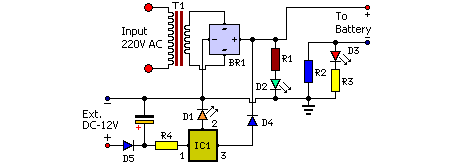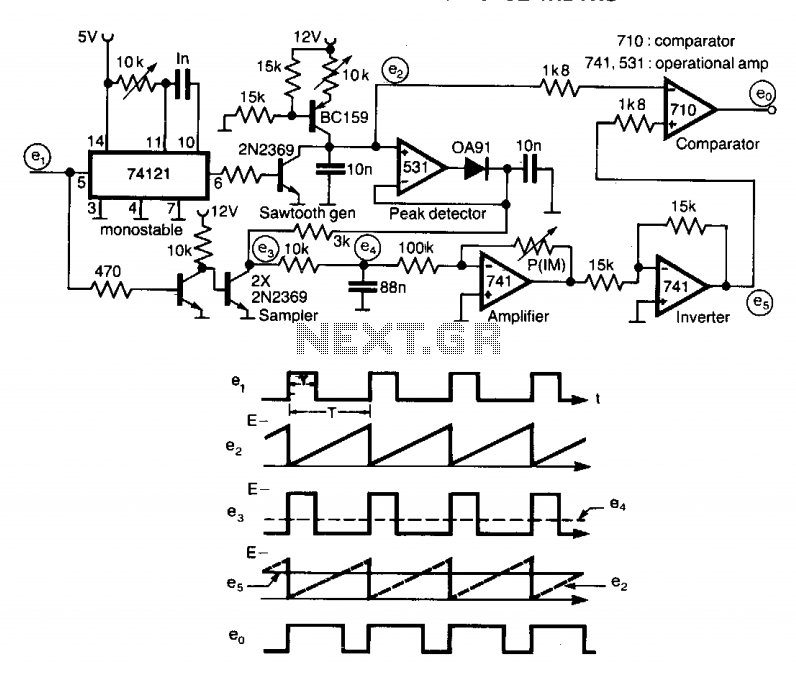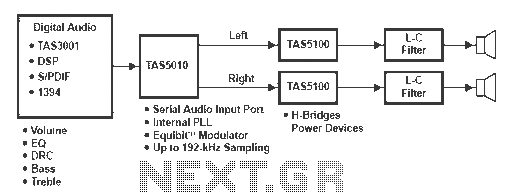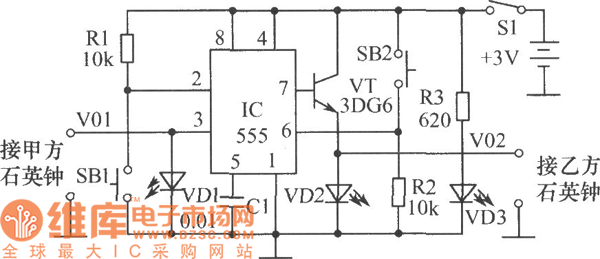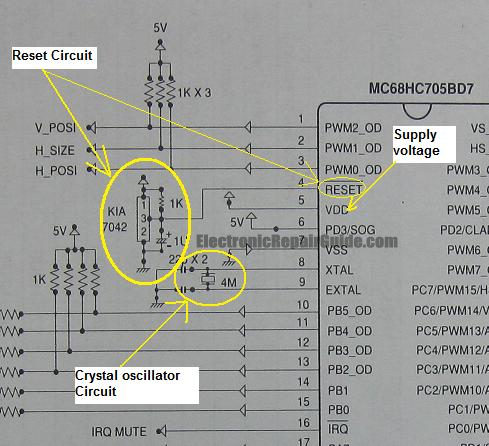
Test circuit diagram with feedback factor of 1 83 of TDA6120Q
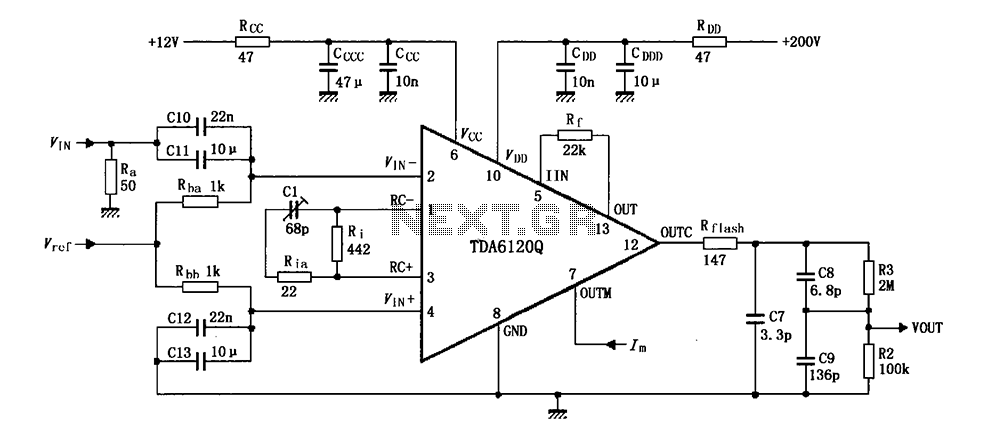
Feedback has indicated that the TDA6120Q test circuit, as shown in the figure, utilizes an input signal (Vi) composed of resistors Ra and capacitors C10 and C11, which are fed into the TDA6120Q at pins 2, 3, and 4. These pins serve as the inverting and non-inverting input terminals of the differential input stage. The amplified signal exits from pin 12 and is processed through the network formed by resistors Rflash, R2, R3, and capacitors C7, C8, and C9. The feedback network is established by the resistor connected to pin 13 (Rf), which enhances the output's dynamic range. Additionally, the resistors connected to pins 1 and 3 (Ri and Rin) and capacitor C1 create a pre-emphasis network. The output stage includes a resistor (Rflash) that provides cathode discharge protection, limiting current and voltage during high-voltage discharges. Decoupling capacitors must be added to Vcc (pin 6) and VDD (pin 10), with high-frequency ceramic capacitors and electrolytic capacitors connected in parallel for optimal performance.
The TDA6120Q is a versatile integrated circuit designed for use in various audio and video applications. It features a differential input stage that effectively amplifies the input signal while maintaining low noise levels. The configuration of resistors and capacitors in the circuit plays a crucial role in shaping the signal and ensuring stability.
The input stage, consisting of Ra, C10, and C11, serves to filter and condition the incoming signal before it reaches the differential inputs. This is critical for achieving high fidelity in the output. The differential inputs at pins 2 and 3 allow for common-mode noise rejection, enhancing the overall signal integrity.
The amplified output from pin 12 is further processed through a network of resistors and capacitors, which serve to adjust the frequency response and gain of the circuit. The feedback resistor (Rf) connected to pin 13 is integral to maintaining stability and controlling the gain of the amplifier, allowing for dynamic range expansion in the output signal.
The pre-emphasis network, formed by Ri, Rin, and C1, is essential for compensating for signal losses at higher frequencies, ensuring that the output maintains clarity and detail. This network is particularly important in applications where signal degradation may occur due to transmission over long distances.
The inclusion of Rflash at the output provides critical protection against voltage spikes, which can occur during sudden changes in load or external disturbances. This resistor limits the current and protects the circuit from potential damage, thereby enhancing the reliability of the system.
For proper operation, it is essential to include decoupling capacitors at Vcc and VDD. The use of both ceramic and electrolytic capacitors in parallel ensures that the circuit is adequately decoupled across a wide frequency range, minimizing the risk of oscillations and ensuring stable operation under varying load conditions. This design consideration is vital for maintaining the performance of the TDA6120Q in real-world applications.Feedback has shown TDA6120Q factor 1/83 test circuit shown in Figure. Input signal Vi composed by Ra, C10, C11 input into the network TDA6120Q 2 feet, 2 feet and 4 feet are ins ide the differential input stage inverting input terminal and non-inverting input, the amplified signal from 12 feet out, after by the Rflash, R2, R3, C7, C8, C9 network of output. Resistance between 13,5 feet Rf is the feedback network, the output from the expansion of the dynamic range of action.
Resistance between 1,3 feet Ri, Rin and capacitor C1 constitute a pre-emphasis network. The output end of the resistor Rflash cathode discharge protection, when a high voltage discharge, serves to limit the current and voltage limiting effect. Vcc (6 feet), VDD (10 feet) must be added decoupling capacitors, high-frequency decoupling capacitance characteristics of a good ceramic capacitors and electrolytic capacitors connected in parallel.
The TDA6120Q is a versatile integrated circuit designed for use in various audio and video applications. It features a differential input stage that effectively amplifies the input signal while maintaining low noise levels. The configuration of resistors and capacitors in the circuit plays a crucial role in shaping the signal and ensuring stability.
The input stage, consisting of Ra, C10, and C11, serves to filter and condition the incoming signal before it reaches the differential inputs. This is critical for achieving high fidelity in the output. The differential inputs at pins 2 and 3 allow for common-mode noise rejection, enhancing the overall signal integrity.
The amplified output from pin 12 is further processed through a network of resistors and capacitors, which serve to adjust the frequency response and gain of the circuit. The feedback resistor (Rf) connected to pin 13 is integral to maintaining stability and controlling the gain of the amplifier, allowing for dynamic range expansion in the output signal.
The pre-emphasis network, formed by Ri, Rin, and C1, is essential for compensating for signal losses at higher frequencies, ensuring that the output maintains clarity and detail. This network is particularly important in applications where signal degradation may occur due to transmission over long distances.
The inclusion of Rflash at the output provides critical protection against voltage spikes, which can occur during sudden changes in load or external disturbances. This resistor limits the current and protects the circuit from potential damage, thereby enhancing the reliability of the system.
For proper operation, it is essential to include decoupling capacitors at Vcc and VDD. The use of both ceramic and electrolytic capacitors in parallel ensures that the circuit is adequately decoupled across a wide frequency range, minimizing the risk of oscillations and ensuring stable operation under varying load conditions. This design consideration is vital for maintaining the performance of the TDA6120Q in real-world applications.Feedback has shown TDA6120Q factor 1/83 test circuit shown in Figure. Input signal Vi composed by Ra, C10, C11 input into the network TDA6120Q 2 feet, 2 feet and 4 feet are ins ide the differential input stage inverting input terminal and non-inverting input, the amplified signal from 12 feet out, after by the Rflash, R2, R3, C7, C8, C9 network of output. Resistance between 13,5 feet Rf is the feedback network, the output from the expansion of the dynamic range of action.
Resistance between 1,3 feet Ri, Rin and capacitor C1 constitute a pre-emphasis network. The output end of the resistor Rflash cathode discharge protection, when a high voltage discharge, serves to limit the current and voltage limiting effect. Vcc (6 feet), VDD (10 feet) must be added decoupling capacitors, high-frequency decoupling capacitance characteristics of a good ceramic capacitors and electrolytic capacitors connected in parallel.
